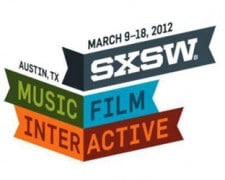 This year’s South By Southwest (SXSW) conference in Austin was a bit different this time around, with 4G hotspots on the backs of homeless people. Agency Bartle Bogle Hegarty’s BBH Labs rolled out the idea, with “I’m [insert name here], a 4G hotspot” t-shirts as they wandered around SXSW with “MiFi” devices. Those wanting to connect to the 4G network could pay what they desired to the homeless person offering it, in cash or through a PayPal link on the Homeless Hotspots website—how cool is that?
This year’s South By Southwest (SXSW) conference in Austin was a bit different this time around, with 4G hotspots on the backs of homeless people. Agency Bartle Bogle Hegarty’s BBH Labs rolled out the idea, with “I’m [insert name here], a 4G hotspot” t-shirts as they wandered around SXSW with “MiFi” devices. Those wanting to connect to the 4G network could pay what they desired to the homeless person offering it, in cash or through a PayPal link on the Homeless Hotspots website—how cool is that?
Here’s what BBH Labs wrote: “This year in Austin, as you wander between locations, murmuring to your co-worker about how your connection sucks, and you can’t download/stream/tweet/instagram/check in, you’ll notice strategically positioned individuals wearing “Homeless Hotspot” T-shirts. These are homeless individuals in the Case Management program at Front Steps Shelter. They’re carrying MiFi devices. Introduce yourself, then log on to their 4G network via your phone or tablet for a quick high-quality connection. You pay what you want (ideally via the PayPal link on the site so we can track finances), and whatever you give goes directly to the person that just sold you access. We’re believers that providing a digital service will earn these individuals more money than a print commodity.”
However, as expected, bloggers and writers questioned the implications of using the homeless as objects of technology. Said New York Times’ David Gallagher: “It is a neat idea on a practical level, but also a little dystopian. When the infrastructure fails us…we turn human beings into infrastructure?”
BBH Labs’ director of innovation, Saneel Radia says Homeless Hotspots are a modern take on yesterday’s “street newspapers,” or “print publications created and sold by homeless populations as a form of entrepreneurial employment. Somehow, our intent has been lost in here….What we’re trying to do is say the street newspaper model works. It’s the output of it that…We fear for its future, and there’s no one working on solving this problem.”
The model is explained further on the Homeless Hotspots website:
As digital media proliferates, these newspapers face increased pressure. Our hope is to create a modern version of this successful model, offering homeless individuals an opportunity to sell a digital service instead of a material commodity.
BBH also said it isn’t selling anything, and the homeless folks with the hot spots are not wearing any kind of branding: “There is no commercial benefit whatsoever.”
On the other, the “Hotspot Managers” get to keep all they earn, and don’t have to share it with anyone. Even better, it doesn’t matter, if they’re successful getting donations. They were guaranteed a minimum of $50 a day for no more than six hours of work–a rate that exceeds Texas’ minimum wage of $7.25 an hour. Yet BBH also claims that the hot-spot managers have generally been earning in excess of that minimum $50, thanks to the generosity of Wi-Fi-seeking SXSW attendees.
The site also features bios for the homeless people participating in the project, all of whom are in the case management program at Front Steps Shelter; links to their PayPal accounts for payment; and their locations around the SXSW conference.
RBR-TVBR observation: We know Homeless Hotspots has also surfaced in NYC (“Unheard in New York”) and have to say it’s a great idea for any city or event. Any homeless person certainly could turn down the offer, but it allows them to make some money, interact with event-goers and do a service all at the same time. Win-win-win. To those who say they are being used, so are a heck of a lot of those in the working world. Many homeless chose to escape that, so the Hotspot option remains just that—an option.




